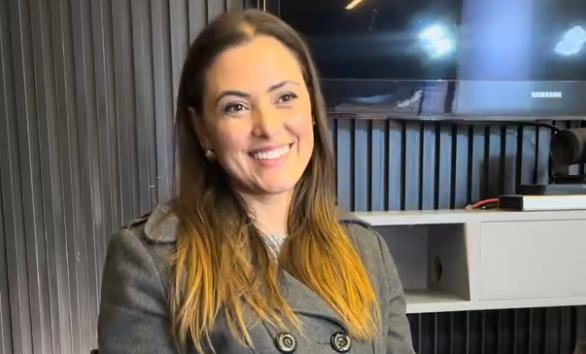BIM (Building Information Modeling) is a set of technologies, processes, and policies that allows various areas of expertise to produce a digital representation of a resource throughout its life cycle, from planning and design to construction and operations. Noticing the needs of clients and keeping an eye on new technologies, Stecla Engenharia created an innovation department to apply the BIM methodology in its projects.
The person in charge of the department is Fernanda Brocardo, an architect and urban planner, project manager at Stecla Engenharia, linked to digital innovation, new methodologies, and new technologies. She has a specialization in Construction Management from the Federal Technological University of Paraná, with research on the implementation of BIM in construction companies. She also holds a master's degree in Construction Management and worked for seven years in the civil construction sector of the Army, working on projects in Paraná and Santa Catarina.
What is BIM?
BIM is a methodology that enables digital construction, where a series of simulations can be performed and decisions can be anticipated during the design phase. For Fernanda, BIM "provides better results and performance, potentially delivering higher quality in projects, in terms of budget, costs, schedule control, and innovation in construction."
BIM and the Evolution of Projects in Civil Construction
The origin of construction projects was on paper, through drawings on drafting boards, where the building was represented through geometry. However, the transition to digital still used the same method of design, but now in a computerized form. The same lines drawn on the drafting board were replicated in CAD, a software that still used geometry without integrating this information with reality.
"In BIM, we are modeling the building, so we are not just placing lines in geometry. We are placing a wall, just like the one that will be built, with several parameters, such as energy efficiency, resistance, cost specifications, deadlines, among others. Thus, all these parameterized pieces of information are much closer to reality. This is why we are able to make simulations and have a much more efficient construction," says Fernanda. BIM is not a new digital way of designing projects; it is a new methodology of work.
BIM and Sustainability
The BIM methodology is a driver of sustainability in the construction industry. It allows for resource optimization and promotes energy efficiency, in addition to reducing waste, improving communication, and making a significant impact on the building’s life cycle. Fernanda comments that through BIM, it is possible to "make a simulation before the construction begins so that, when it is actually built, it is done in a much more efficient way."
BIM and People
When talking about BIM, the focus is often on the tools or software, but this is a methodology that also involves people and processes. That’s why BIM is a paradigm shift. "I think the biggest impact of BIM is precisely in this regard. Not just with the tool, but in the interaction with people, how I will share knowledge through these models. To be efficient, integration with the whole team is necessary, with those who have been managing the project for a long time, with the budget analyst who has experience in analyzing this data, among others. This way, we achieve an enriched model, with shared knowledge," says Fernanda.
BIM and Stecla Engenharia
Fernanda shares that what fascinates her most when using the BIM methodology is seeing the result, seeing the client using the space, and their excitement when the BIM results are visualized in practice. "We have very challenging clients, such as industrial projects, complex works, with challenges in deadlines, costs, and large, multidisciplinary teams," she comments.
Stecla Engenharia made this adaptation before other companies in the industry, which makes it a standout in the sector. "The biggest impact is having this more holistic view. The result of BIM brings an impact to society, to the environment, and this aligns with the goals of our clients. In the long term, what we are executing now will have a significant impact on the environment, people, and the economy. So, I believe this is the most interesting aspect of adopting these new technologies," concludes Fernanda.



